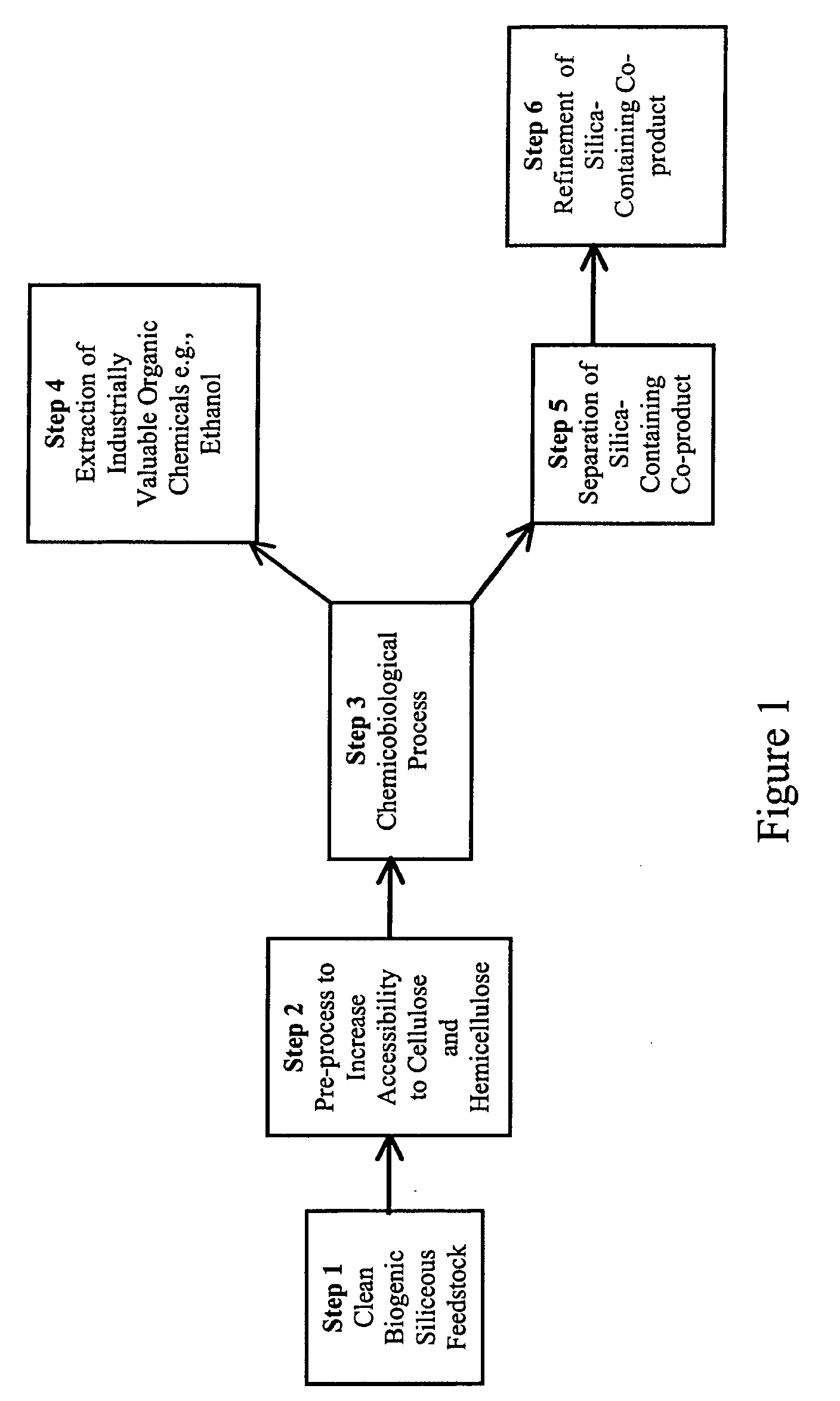Methods for co-production of ethanol and silica from equisetum
a technology of equisetum and ethanol, which is applied in the field of co-production of ethanol and silica from equisetum, can solve the problems of high level of undesirable elemental impurities in si product, high cost of purification process, and the cost of final silicon is approximately 5 to 10 times the amount desired
- Summary
- Abstract
- Description
- Claims
- Application Information
AI Technical Summary
Problems solved by technology
Method used
Image
Examples
Embodiment Construction
[0020]The present invention is directed to methods for the co-production of both high-purity silica, which is suitable for applications such as the synthesis of silicon for solar-cells, silicon tetrachloride and silicon carbide, and industrially useful chemicals such as ethanol, using a biological process that breaks down the cellulose found in siliceous plant material from plants such as Equisetum.
[0021]The present inventor has determined that plants in the genus Equisetum, known as “horsetail weeds”, are a preferred type of siliceous plant material for use with the method of the present invention, for a number of reasons. Equisetum plants contain some of the highest biogenic silica content known in the plant kingdom, as high as 25% dry weight. Silica, isolated from such plants in high purity form will have many highly advantageous properties if it is used as an SiO2 source in the carbothermic generation of silicon. For instance, silica derived from Equisetum is amorphous, and the...
PUM
| Property | Measurement | Unit |
|---|---|---|
| temperature | aaaaa | aaaaa |
| temperature | aaaaa | aaaaa |
| temperature | aaaaa | aaaaa |
Abstract
Description
Claims
Application Information
 Login to View More
Login to View More - R&D
- Intellectual Property
- Life Sciences
- Materials
- Tech Scout
- Unparalleled Data Quality
- Higher Quality Content
- 60% Fewer Hallucinations
Browse by: Latest US Patents, China's latest patents, Technical Efficacy Thesaurus, Application Domain, Technology Topic, Popular Technical Reports.
© 2025 PatSnap. All rights reserved.Legal|Privacy policy|Modern Slavery Act Transparency Statement|Sitemap|About US| Contact US: help@patsnap.com

